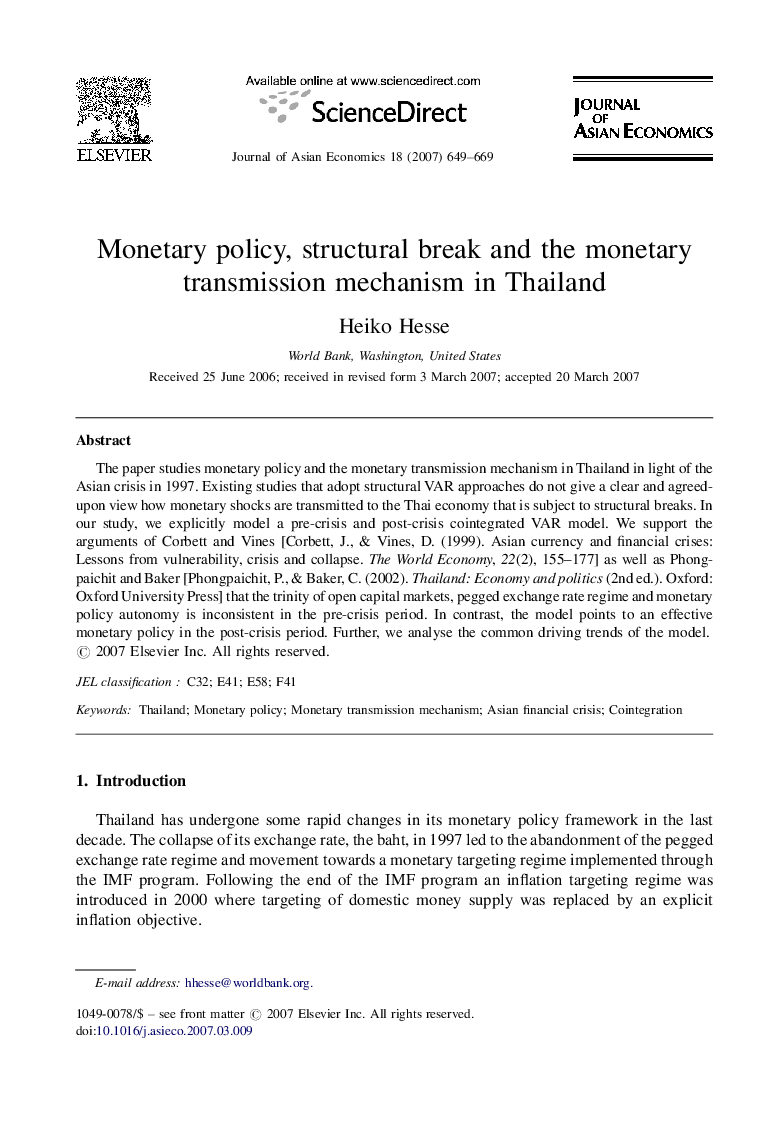| Article ID | Journal | Published Year | Pages | File Type |
|---|---|---|---|---|
| 5087751 | Journal of Asian Economics | 2007 | 21 Pages |
The paper studies monetary policy and the monetary transmission mechanism in Thailand in light of the Asian crisis in 1997. Existing studies that adopt structural VAR approaches do not give a clear and agreed-upon view how monetary shocks are transmitted to the Thai economy that is subject to structural breaks. In our study, we explicitly model a pre-crisis and post-crisis cointegrated VAR model. We support the arguments of Corbett and Vines [Corbett, J., & Vines, D. (1999). Asian currency and financial crises: Lessons from vulnerability, crisis and collapse. The World Economy, 22(2), 155-177] as well as Phongpaichit and Baker [Phongpaichit, P., & Baker, C. (2002). Thailand: Economy and politics (2nd ed.). Oxford: Oxford University Press] that the trinity of open capital markets, pegged exchange rate regime and monetary policy autonomy is inconsistent in the pre-crisis period. In contrast, the model points to an effective monetary policy in the post-crisis period. Further, we analyse the common driving trends of the model.
